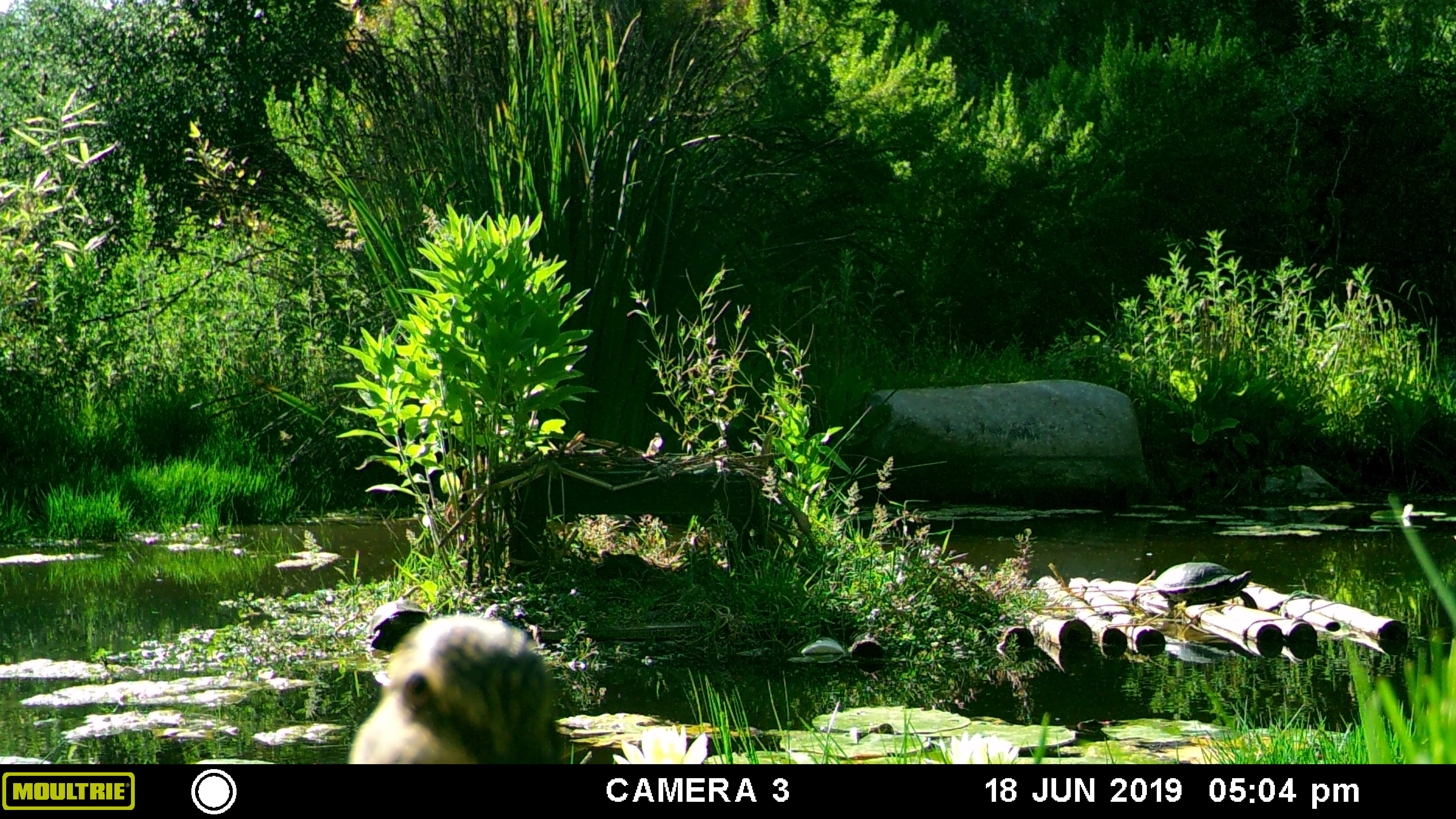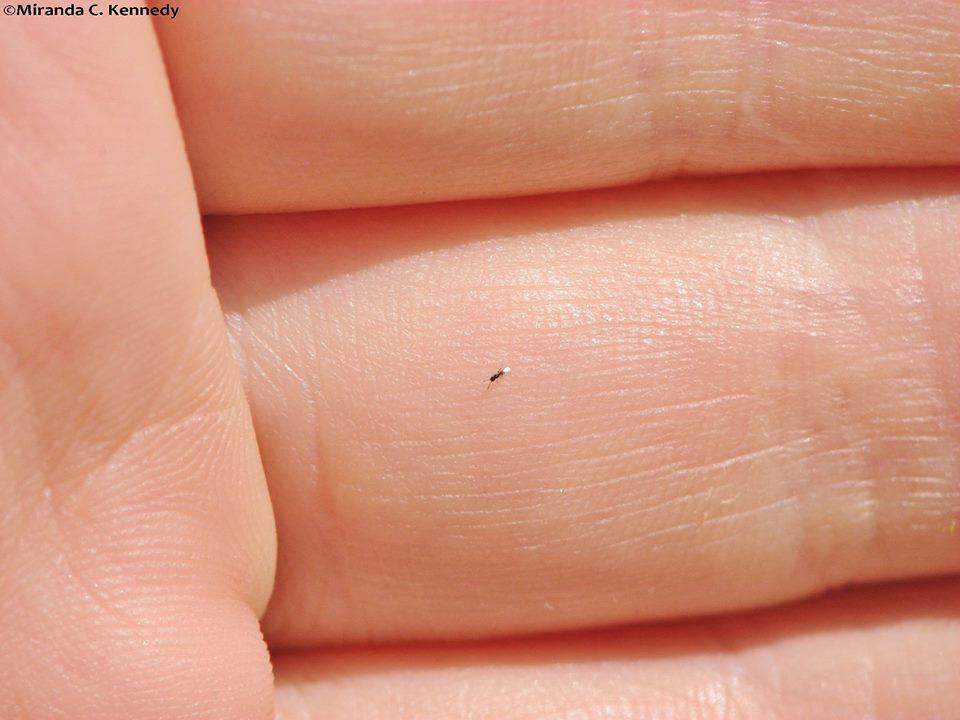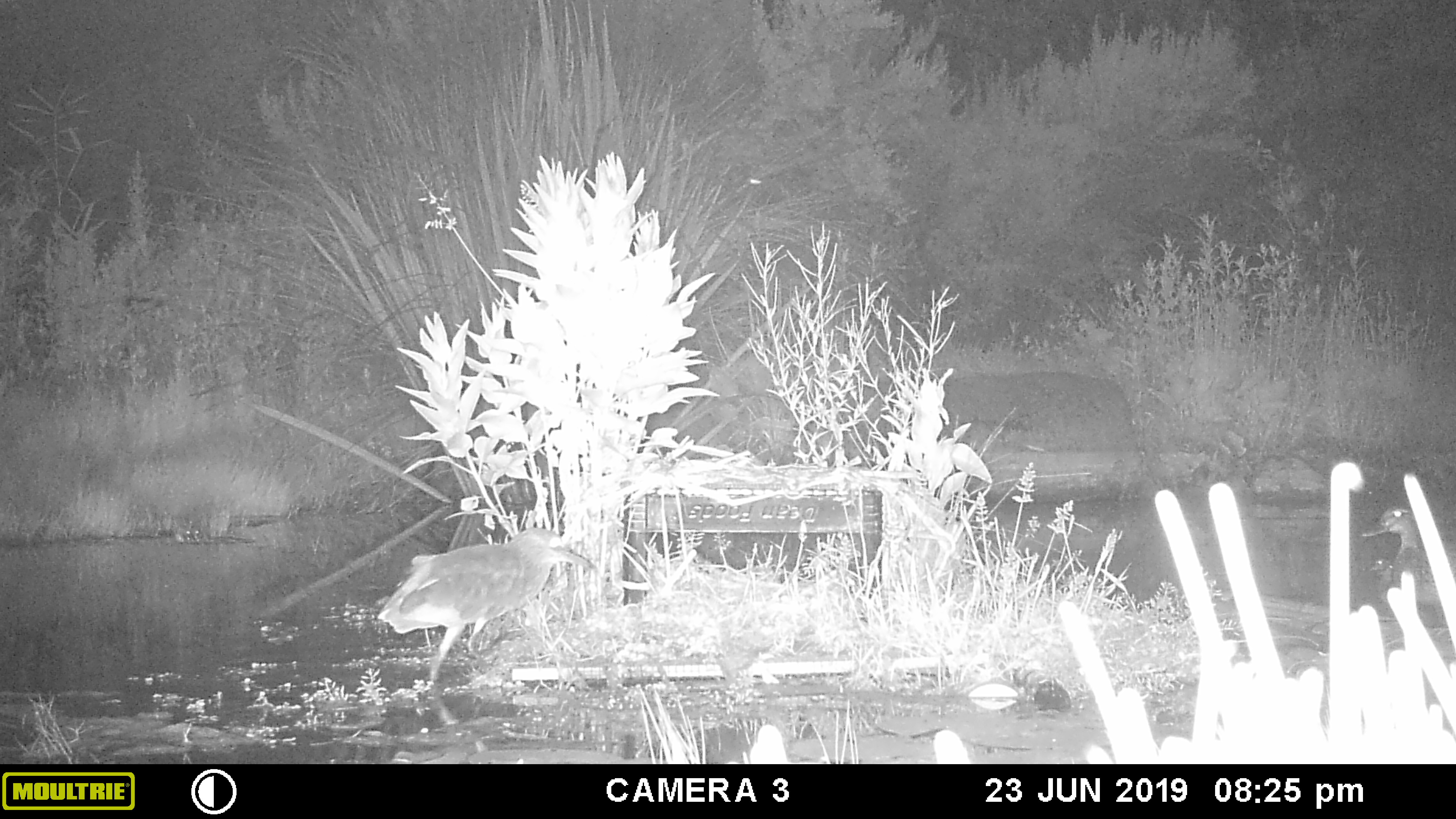
From Heron Out
 POND FROLICS
POND FROLICS
Lessee, what can I tell you about the Black-crowned Night-Heron (Nycticorax nycticorax)….
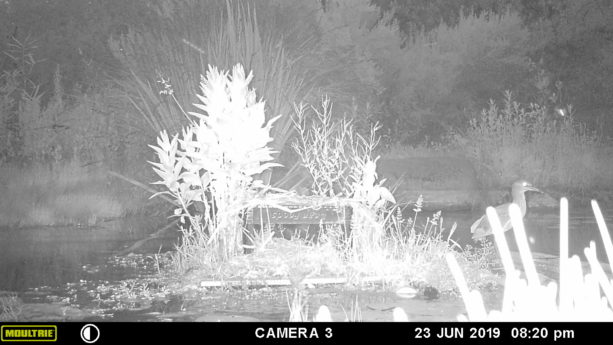
There’re small herons. They have blackish feathers on top of their heads. I guess you could call it a cap. A blackish cap.

They’re the most widespread species of heron in the world, apparently. Noisy, social, not too fussy.
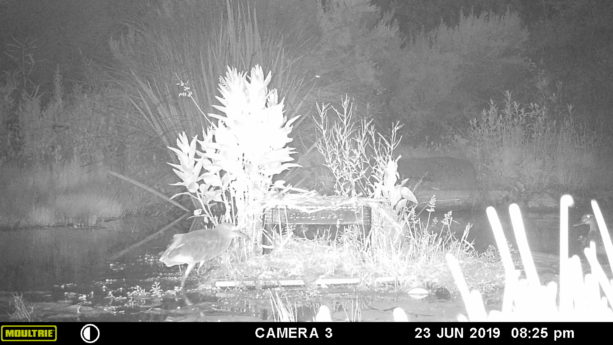
Oh, and this is surprising: they do most of their hunting and such at night or in the dusk: evening and early morning. Herons of dimness. Darkling herons. Gloaming. Blackish-capped. Herons.
…Yep.

